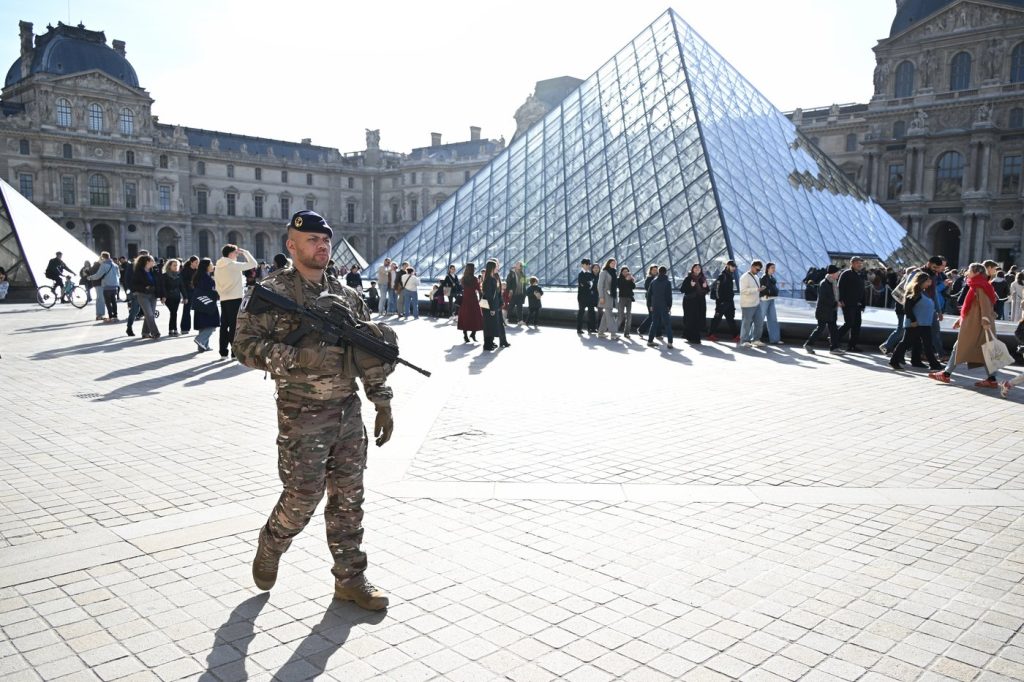PARIS (AP) – A significant escalation in the investigation surrounding the crown-jewels heist at the Louvre Museum took place on Thursday, with five additional suspects arrested, including one linked through DNA evidence, as stated by the Paris prosecutor. This development broadens the ongoing efforts to apprehend the thieves, referred to by French media as the "commando" team.
According to authorities, three of the four alleged members of the robbery crew are now detained. The recent late-night raids in Paris and the nearby Seine-Saint-Denis area have raised the total number of arrests to seven. Paris prosecutor Laure Beccuau indicated that one of the detainees is believed to be associated with the group that executed the audacious theft, while others may provide insights into the unfolding of events leading to the heist.
Beccuau characterized the current police response as an "exceptional mobilization," involving approximately 100 investigators working daily, seven days a week. So far, 150 forensic samples have been analyzed, and 189 items have been collected as evidence. However, despite these efforts, the loot, estimated to be worth around $102 million—featuring a diamond-and-emerald necklace originally given to Empress Marie-Louise by Napoleon, as well as jewelry linked to two 19th-century queens—remains missing.
Only one item has resurfaced to date: Empress Eugénie’s crown, which was found damaged but still salvageable and was abandoned during the thieves' escape. Beccuau reiterated her appeal for the return of the jewels, stating: "These jewels are now, of course, unsellable… There’s still time to give them back." Experts caution that the stolen gold could be melted down, and stones re-cut to obscure their provenance.
The planning behind the heist, which took only four minutes to execute, has become clearer. Nine days before the robbery, a mover rented a truck-mounted lift under the guise of a "moving job" from the French classifieds site Leboncoin, akin to Craigslist. When he arrived in Louvres, north of Paris, at approximately 10 a.m. on October 10, he was ambushed, and his lift truck was stolen. On the day of the heist, this truck was seen parked beneath the Louvre's riverside façade.
At 9:30 a.m., the basket lift ascended to the Apollo Gallery window, breaking in at 9:34 a.m. By 9:38 a.m., the robbers had vanished. The police and museum security's near-simultaneous response prevented the thieves from destroying the lift, preserving vital forensic evidence, according to the prosecutor. Security footage reveals at least four men using power tools to break into two display cases before fleeing on scooters toward eastern Paris. Investigators currently see no indicators of insider assistance but are not discounting a broader network beyond the visible quartet.
The heist has prompted serious scrutiny regarding the Louvre's security measures. Paris police have admitted significant deficiencies in their defenses, as the robbery unfolded in plain sight of museum visitors. Police chief Patrice Faure admitted that the initial alert did not originate from the museum's security systems, but rather from a cyclist who called the emergency line after witnessing the suspicious activity. He recognized that outdated, partially analog security cameras, combined with slow upgrades, contributed to the vulnerabilities; a major CCTV cabling project costing $93 million won’t be completed until 2029-2030, and the Louvre's camera authorization had lapsed in July.
Speaking to the Associated Press, former bank robber David Desclos labeled the theft as "textbook," adding that he had warned the Louvre about existing vulnerabilities in the Apollo Gallery's layout. The Louvre has not publicly addressed these claims. The two suspects detained earlier—aged 34 and 39 from Aubervilliers, a region north of Paris—were charged with theft by an organized gang and criminal conspiracy after nearly 96 hours in custody. Beccuau noted that both provided minimal information and "partially admitted" to their involvement, with one being apprehended at Charles-de-Gaulle Airport while attempting to board a flight to Algeria, where his DNA matched that found on a getaway scooter.
Under French law, ongoing investigations typically remain confidential to safeguard police operations and victims’ privacy, allowing only prosecutors to disclose information publicly, although partial details occasionally emerge from police unions in high-profile cases. The audacious robbery at the world's most-visited museum has shocked the cultural community, transforming the Apollo Gallery—filled with priceless artifacts—into a crime scene and raising intense questions about how France safeguards its national treasures.












